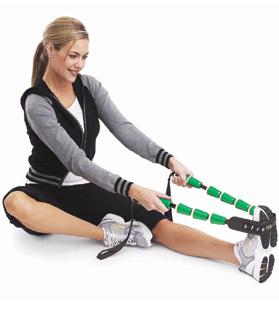This is going to be a new and ongoing series here on my blog. I’m going to evaluate statements that may sound great to the lay person, but when examined closely doesn’t hold much water.
Today’s first installment is going to discuss some of the science behind flexibility and “short” muscles. Here’s a statement I’ve heard more than a handful of times:
“A muscle can’t get short – after all, your bones don’t shorten, do they?”
When we examine this statement, it may help to think about the polar opposite – in what case could a muscle shorten?
The most obvious case is when someone is splinted in a shortened position for a long period of time. Think about the guy who breaks his arm and ends up in a splint for 6-8 weeks. His arm doesn’t magically straigthen when he gets out of the cast, right?

If you read Michael Alter’s Science of Flexibility he cites references where a splinted muscle in animals can lose up to 40% of its sarcomeres!
Quite simply, fewer sarcomeres in series = less length.
This is why it’s critical to determine if a muscle is stiff or short in the initial assessment. A stiff muscle isn’t necessarily a bad thing – stiffness helps us run faster, jump higher, and lift more weight. Stiffness becomes an issue when it’s unbalanced between adjacent joints (i.e. your hips become stiffer than your lumbar spine).
In contrast, a short muscle is almost always going to impede range of motion.
Now before I start getting a ridiculous amount of hate mail, let me preface this by saying a few things:
– Much of this research is performed on animals. It’s definitely a scientific gray area and not a perfect transfer from animals to humans.
– Splinting in a shortened position is an extreme case.
– Following splinting, assuming one works at it, the sarcomeres can be added back in.
Here’s the big question, though: We know the body adapts to everything. Our posture. Our training. Quite simply, everything we do affects our posture and our movement, for better or worse.
So what if we sit for 6, 8, or 10 hours every single day? If our body doesn’t need all those sarcomeres in series, it can and probably will get rid of them.
Just like your body adapts to strength training by developing bigger and stronger musles, your body adapts to chronic shortening of your muscles by losing length.
The question then becomes, how much is “enough?” We know that soft-tissue creep and adaptive shortening can set-in in about 20 minutes, but we need to determine where that critical point is where things really start to get bad so we can avoid it.
Until I have a more definite answer, I typically recommend that you avoid any prolonged static posture by moving around every 15-20 minutes.
For more info on this topic, I would highly suggest reading Bill Hartman’s blog on this topic: Stiffness and Shortness revisited.

As well, Bill goes into more depth on the evaluation of short muscles, along with treament strategies in our Indy Peformance DVD Series.
Stay strong
MR

